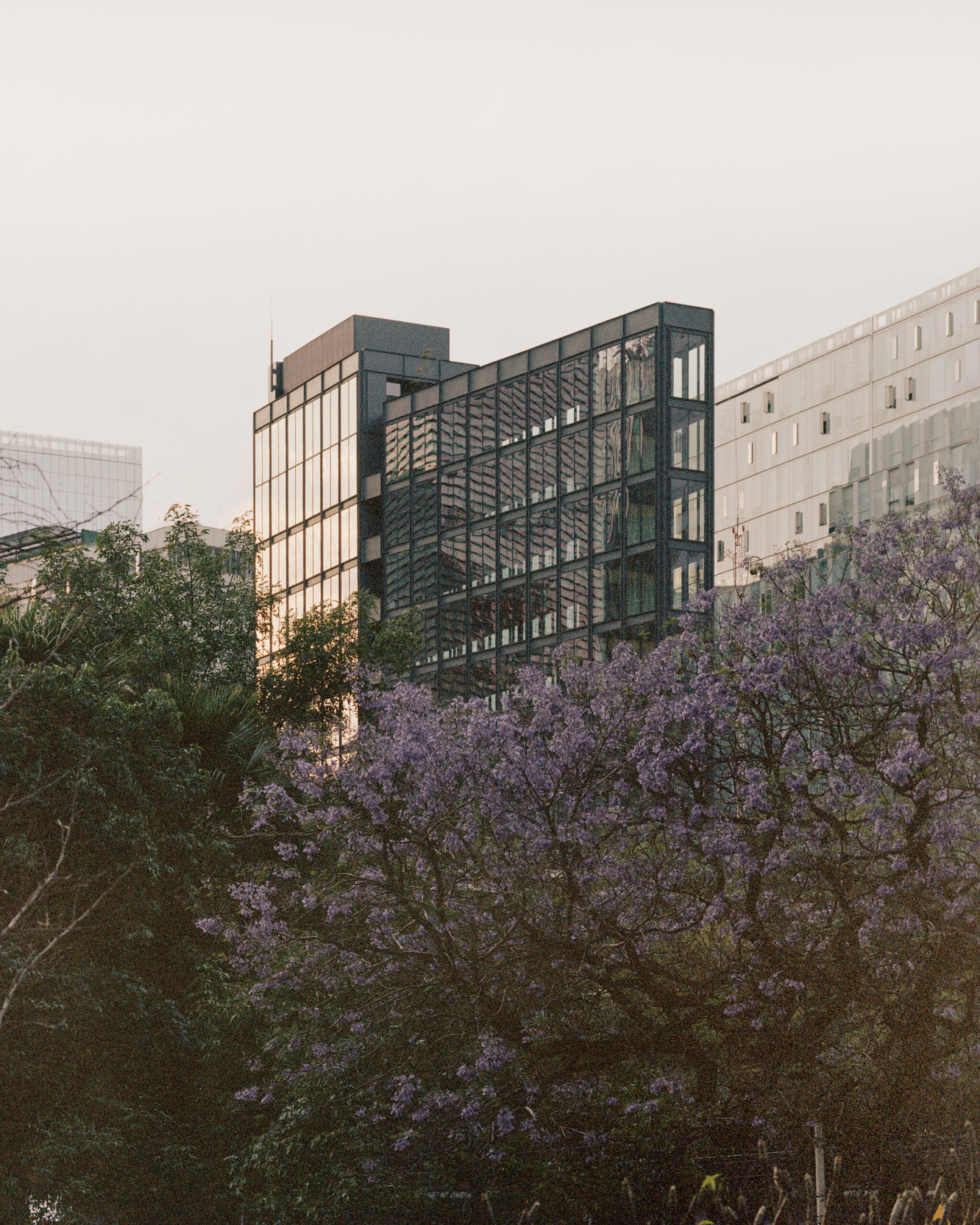
Ferrocarril de Cuernavaca 780, Hemaa
Embodying the city’s future
Sometimes, I look at certain architectural works and wonder how someone could come up with them. On other occasions, I find myself questioning how humans could manage to construct a certain structure. Well, the Ferrocarril de Cuernavaca 780 raises both of those inquiries when looking at it. While observing its characteristics, I can’t seem to wrap my head around how architecture created such an exceptional piece. It seems almost as if it were not real, as if it were a product of the imagination.

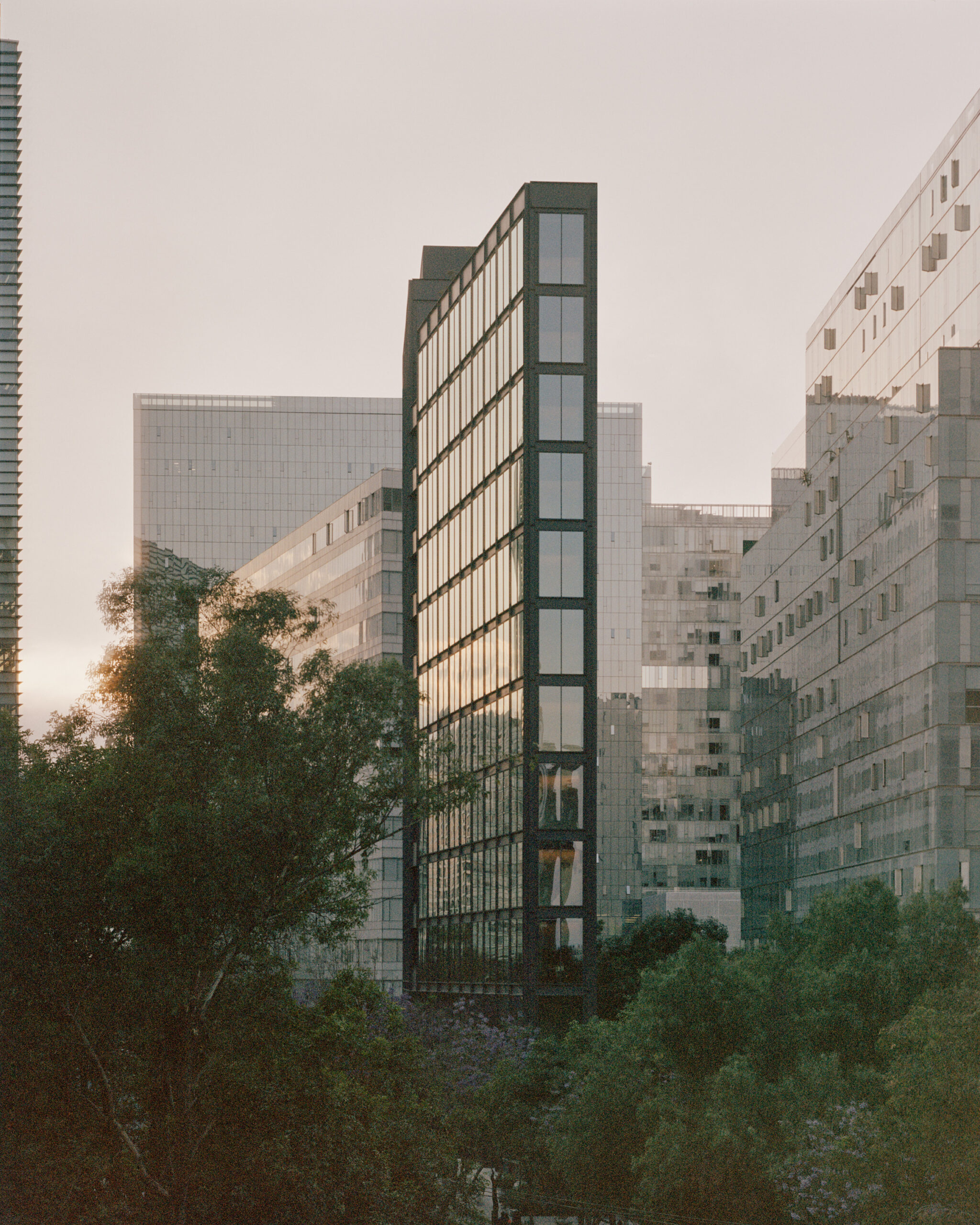
But it is not. Its interior space can be used and inhabited, with a design that allows one to blend with the surroundings, practically floating over the vibrant life of Mexico City. Defying all expectations, Hemaa, an architecture studio based in the city, brought to life a slender plot of land that seemed destined to languish as an overlooked space within the city’s fabric. However, through the studio’s thorough and creative design ability, they were able not only to envision, but to materialize the emergence of a unique tower that would deftly adapt to the challenging terrain, trapped between a narrow street and the remnants of the Ferrocarril de Cuernavaca Railroad.
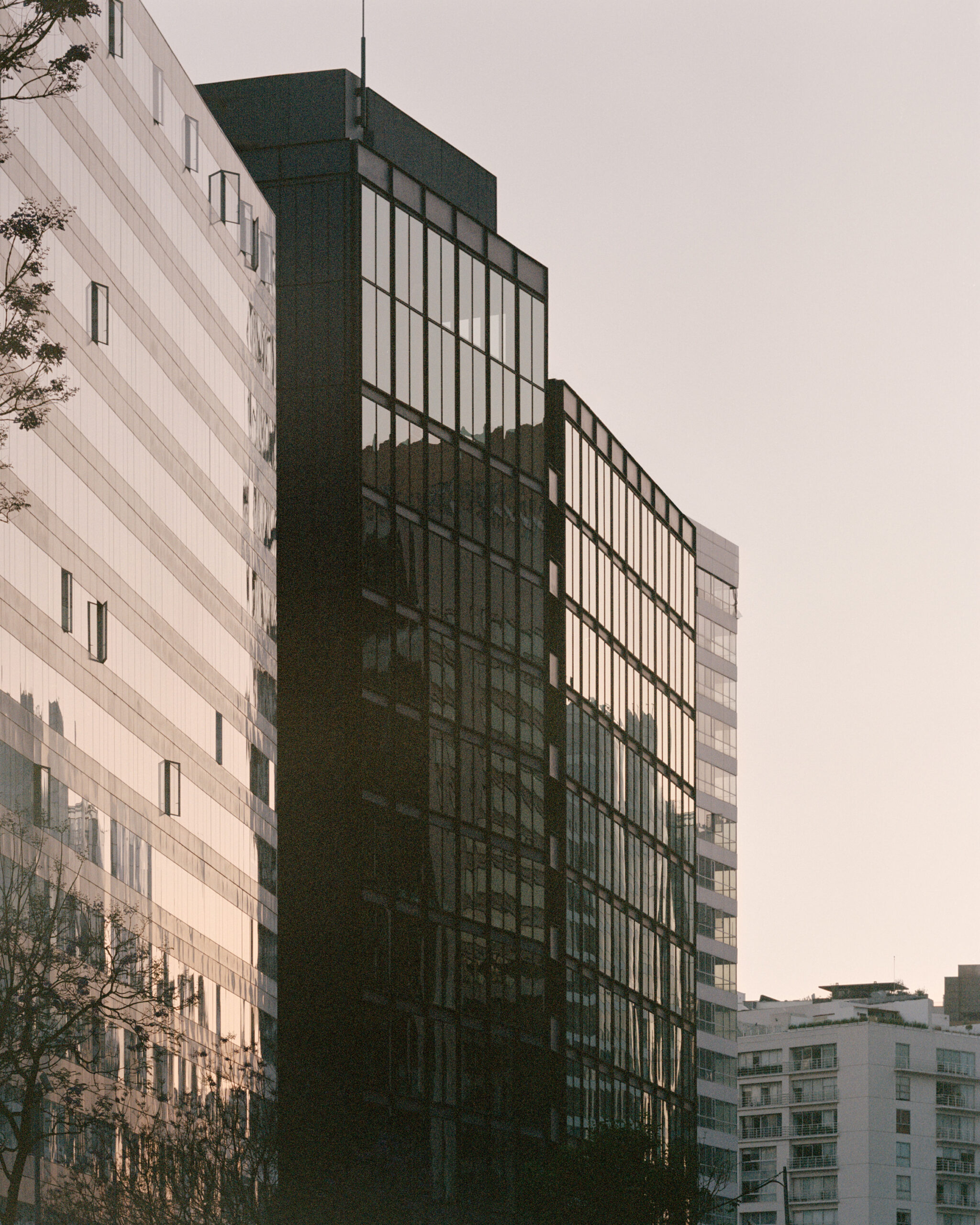
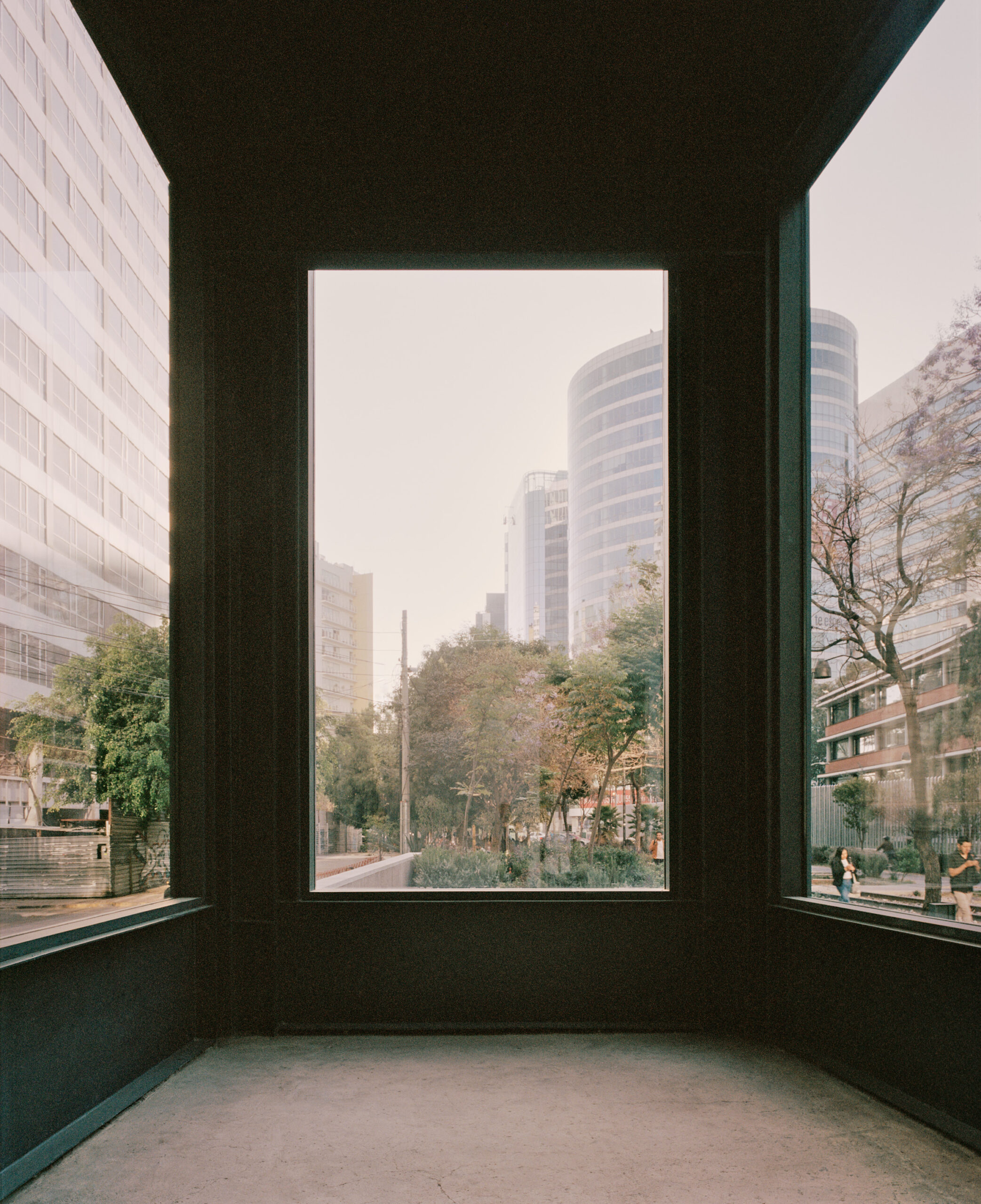
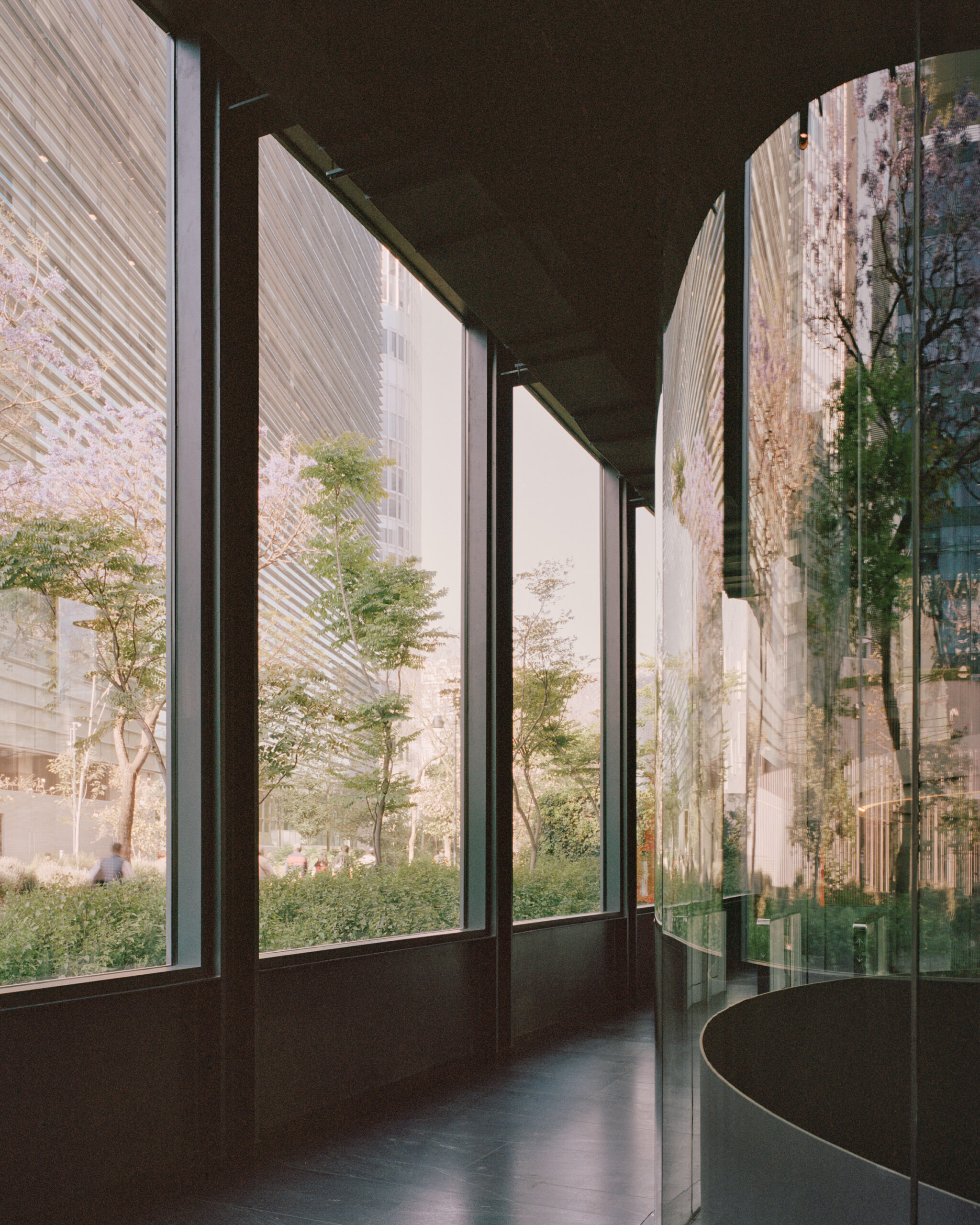
The Ferrocarril de Cuernavaca 780 is the result of delving deep into the exploration of aesthetic proportions, meticulously analyzing and interpreting classical architectural elements, and translating them into the realm of modern architecture. Made of steel, concrete and glass, the structure remains attentive to the specific conditions of the site, whilst also adding personality and design majesty.
One of the building’s most characteristic assets is the dominant presence of windows of varying sizes, adapting to the space while also providing the most embracing natural light, as well as the connection of the insider with the outside. The studio employed the structural façade as an astute solution, liberating the floors of any obstacle and creating an open space where the use of the interior is optimized. Moreover, the façade becomes an artwork itself, creating a glass-squared pattern through the entire surface that, when the glazing golden hour arrives, mirrors its neighboring constructions.
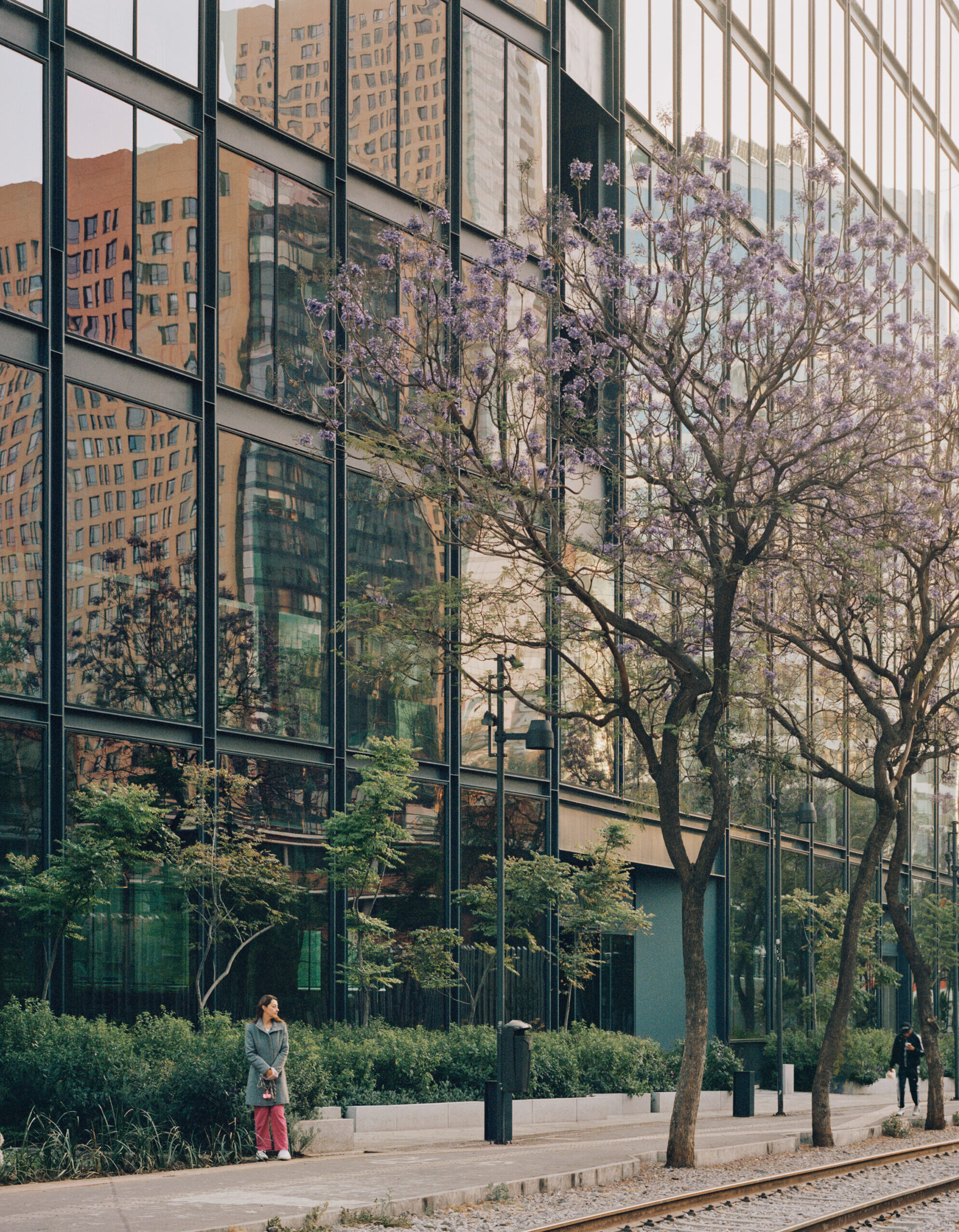
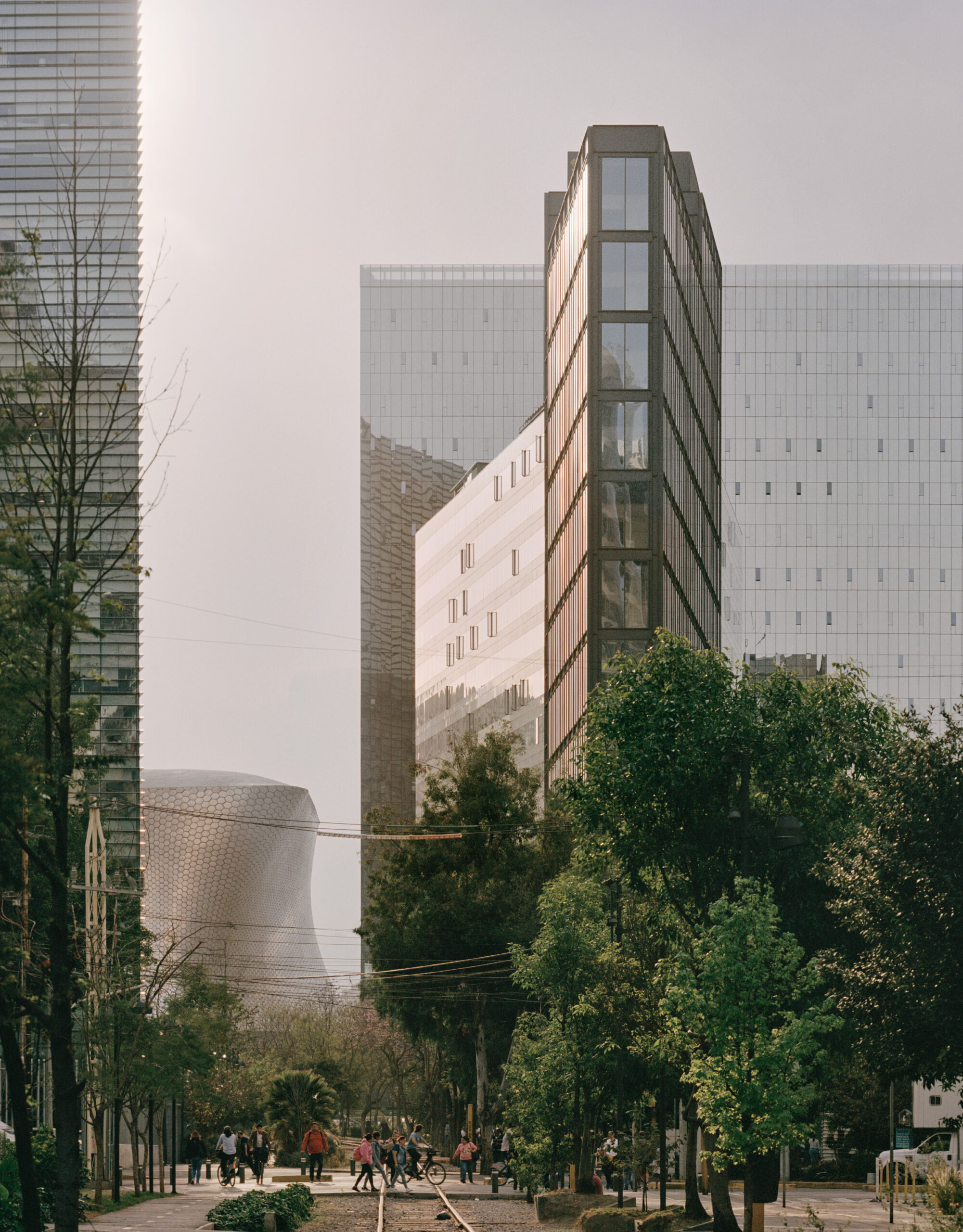
The ground floor is one of the most particular parts of the building. With two symmetrical entrances at each end, the design produces a seamless flow of pedestrians inside the building, creating a dynamism that keeps the street together. Not only that, but the ground floor also encompasses parking cabins, a commercial space for a neighborhood coffee shop, and inviting terraces.
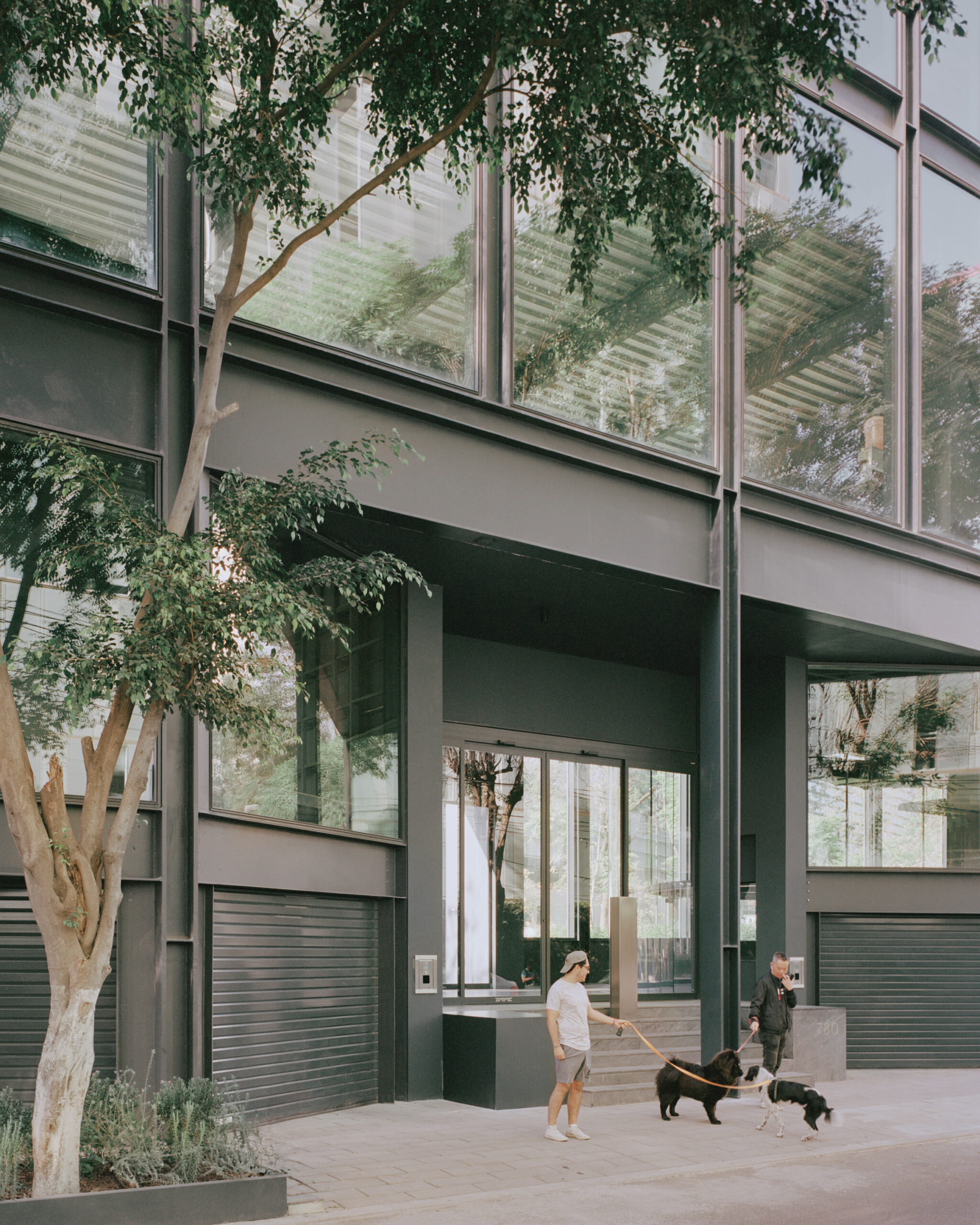
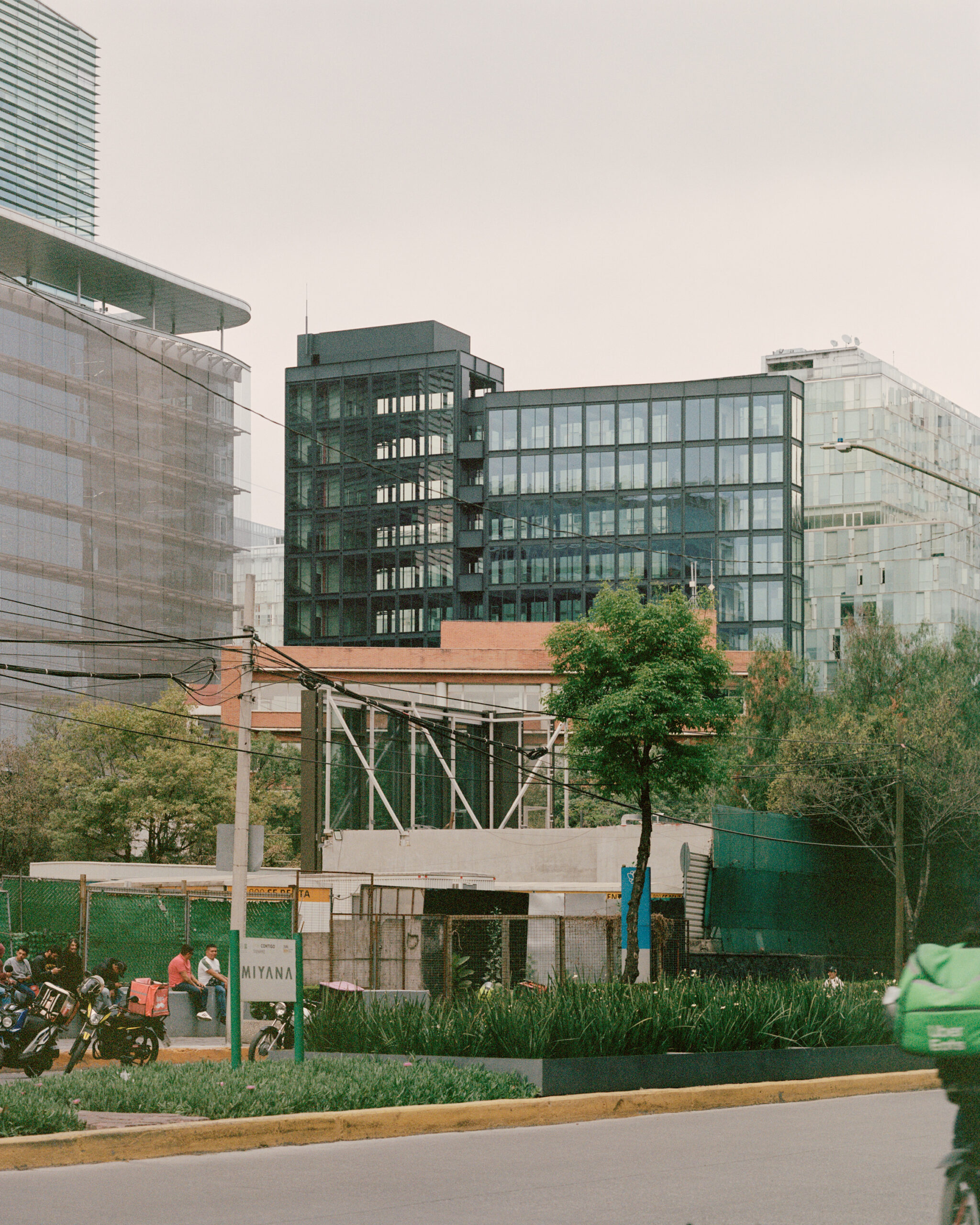
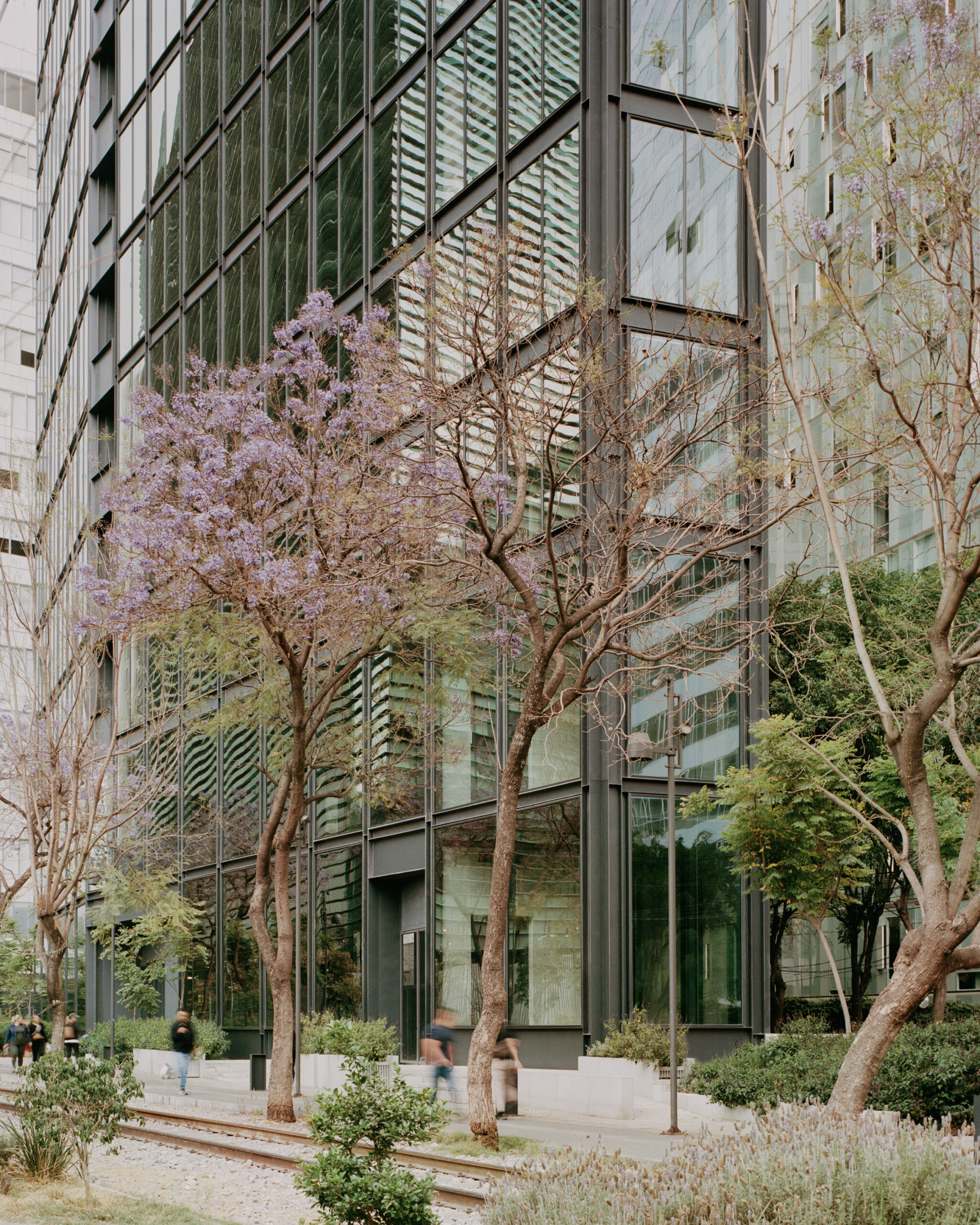
Superstition says that 13 is the bad luck number, but here it is quite the opposite. On the 13th floor, the interior area recedes, allowing for a wide rooftop that grants panoramic views extending from the city’s skyline to Chapultepec Park. Looking out on the rooftop, the viewer feels like it is practically diving into the wideness of Mexico City.

Steel is the main character of the Ferrocarril de Cuernavaca 780, endowing the architecture with a modern and sophisticated touch. However, the steel also has another very special role: it serves as an evocative reminder of the area’s industrial past. Once peripheral, the district where the building is located has now become a rejuvenated area of Mexico City, turning into the home of the most vibrant locales, and boosting not only cultural but also economic and infrastructural growth in recent years. Faithful to its historic location, alongside the railway tracks, the building’s name acts as an homage.
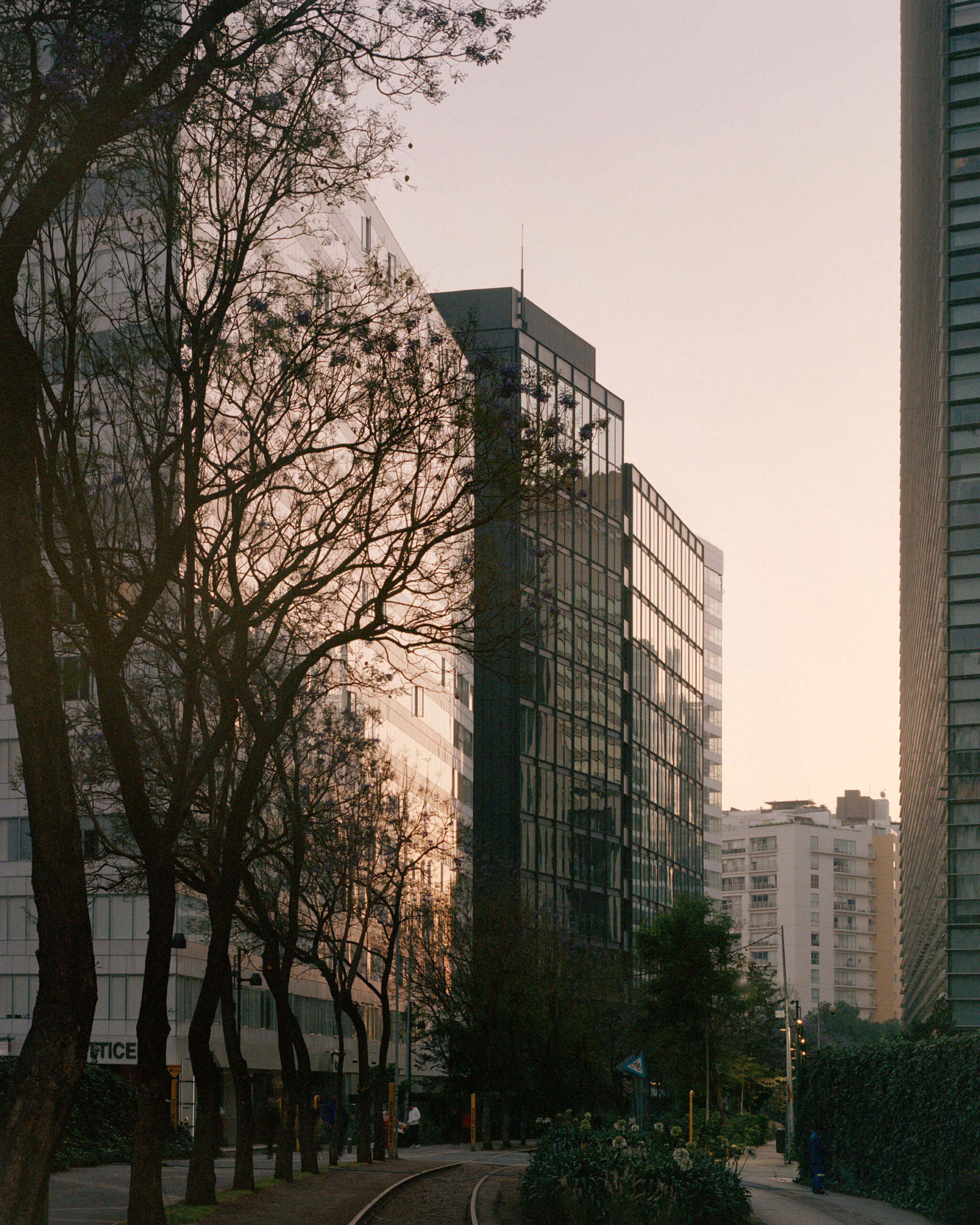
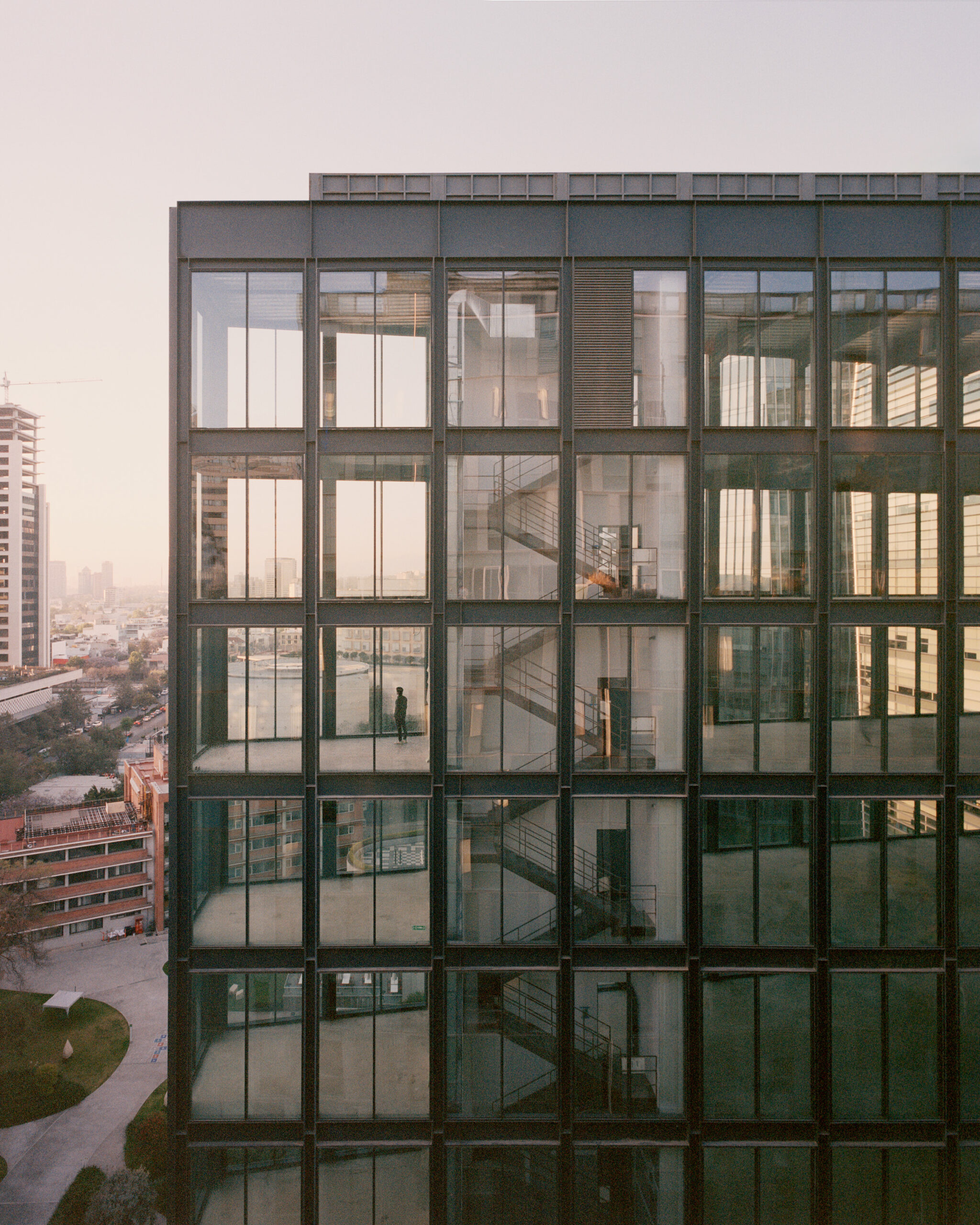
Guided by the principles of rationality, order, and meticulous proportion, Hemaa is sure about what they want this project to be: “This project aspires to contribute to the urban fabric, becoming an integral part of its narrative”. History passes, but it is remembered. And, with the years, history isn’t forgotten, but society develops. The Ferrocarril de Cuernavaca 780 is now part of the new history of the district that welcomes it, acting as a representation of what is to come.
While harmonizing with its surroundings, the building possesses an exceptional and distinctive form. Depending on the viewer’s vantage point and the time of observation, its shape gracefully metamorphoses, offering a myriad of unique interpretations. Its unequivocal identity creates an ideal backdrop for the tower to assume a vibrant existence once it becomes inhabited. Technology and architecture seamlessly intertwine, composing a flexible system that ensures efficient energy usage and resource management.
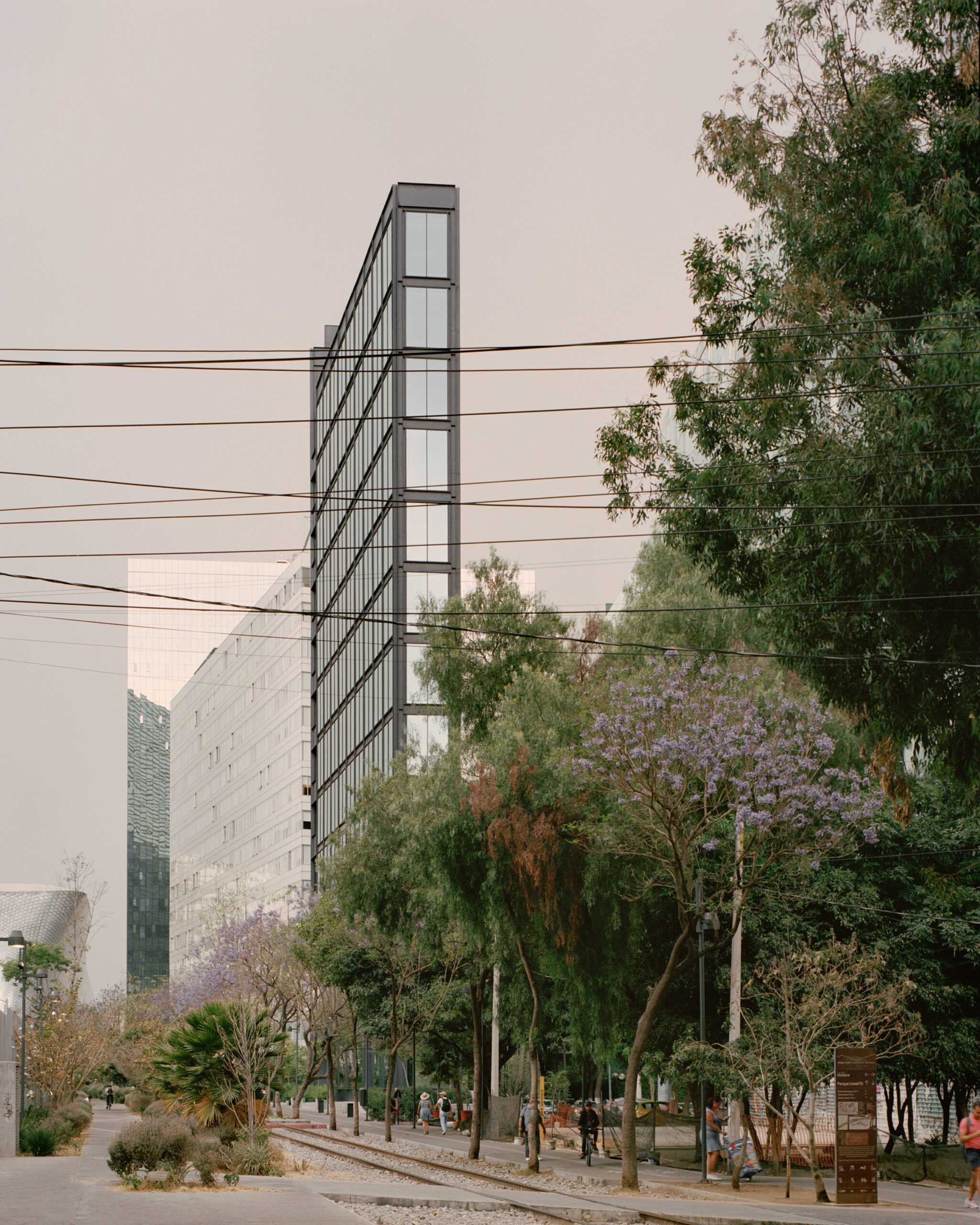
Hemaa’s architectural project isn’t only an artistic piece, but it is also a true example of sustainable construction. With energy efficiency measures, insulation systems, water conservation strategies and much more, the Ferrocarril de Cuernavaca 780 exemplifies how space optimization and sustainability can both be the essential pillars of an aesthetic and modern artistic architecture. Much like the adjacent parks and museums, this building embraces the responsibility of shaping a resilient urban fabric where the past and present harmoniously converge, culminating in an image that embodies the city’s future.



